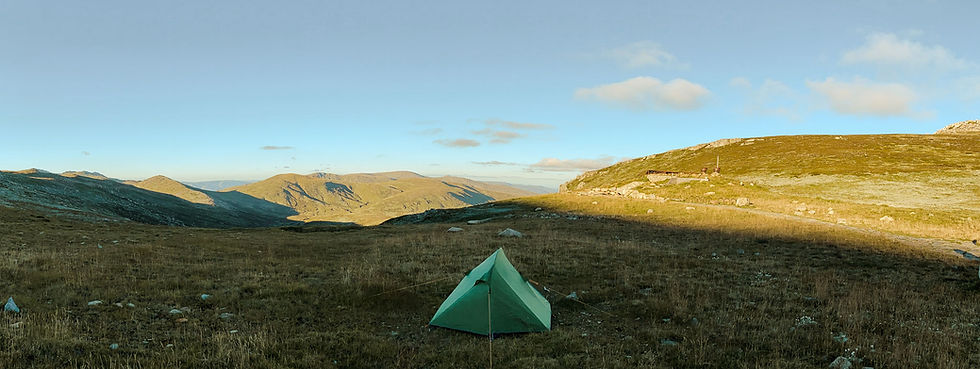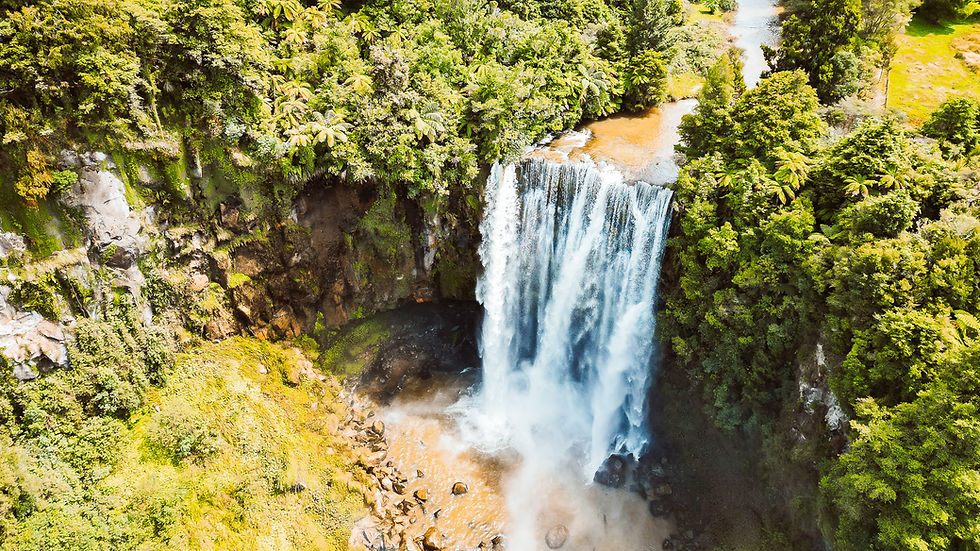HIKING THE TONGARIRO ALPINE CROSSING
- becandclark

- Mar 2, 2023
- 5 min read
Updated: Oct 2
A DAY ON ONE OF NEW ZEALAND'S BEST HIKES
The Tongariro Alpine Crossing is considered one of the best day hikes in New Zealand and even ranks among the top day hikes in the world. The 20.2 km track takes you through a dramatic volcanic landscape of craters, picturesque lakes, and sweeping views.
It's easy to see why this hike is extremely popular among hikers and tourists, but it's not a walk in the park. The Crossing can be very challenging, with steep climbs, unpredictable alpine weather, and nearly 800 m of elevation gain before a long 1,000 m descent.
When we hiked this trail, we quickly learned how fast the conditions can change; blue skies one minute, freezing wind and mist the next. We also saw plenty of people turning back before reaching the Crossing. This is a hike best enjoyed when you're prepared, so here's a look into our experience and what to know before you go.

QUICK LINKS
ABOUT THE TRAIL
The Tongariro Alpine Crossing is in Tongariro National Park, right in the centre of New Zealand's North Island. It's the country's oldest national park and a dual UNESCO World Heritage Site, recognised for both its cultural significance to the Māori people and its dramatic volcanic landscape.
The track runs 20.2 km (12.55 mi) one way, climbing around 765 m (2,510 ft) to the Red Crater, the highest point of the trail, before descending 1,125 m (3,691 ft) to the Ketetahi Car Park. Most hikers take 6-8 hours to complete the hike.
The terrain is varied and sometimes challenging. While parts of the path are boardwalk or stairs, you'll also cross scree slopes, uneven volcanic rock, and muddy patches. The alpine setting means conditions can change quickly, even in Summer. One moment might be warm sunshine, the next freezing wind or rain. Always check the forecast and turn back if it feels unsafe.
A booking is now required to hike the Tongariro Alpine Crossing. This is to ensure preservation of the environment and control visitor numbers. Securing a spot in advance is recommended, especially during peak season.
Visit the Tongariro Crossing website for more information and details on how to book your spot.
GETTING THERE
The Tongariro Alpine Crossing is a one-way track, starting at the Mangatepopo Car Park and finishing at the Ketetahi Car Park. Since the two ends are on opposite sides of the mountain, you'll need to plan transport in advance.
The most convenient option is to pre-book parking at Ketetahi (the finish) and take the shuttle service to the start. That way, when you complete the hike, your car is waiting just across the road. Parking at Mangatepopo (the start) is limited to 4 hours, so it's not suitable if you're doing the full crossing.
We booked the Ketetahi car park and one-way shuttle service through the Tongariro Crossing website.
If you don’t have a car, there are plenty of shuttle services running from nearby towns like Taupō, Tūrangi, Ohakune and Whakapapa. Just make sure you book your time slots for both drop-off and pick-up and keep an eye on the time. We saw many hikers sprinting the last section of the trail trying not to miss their ride home.
THE EXPERIENCE
The hike begins gently in the Mangatepopo Valley, the flattest and easiest stretch of the track. Don't get too comfortable though. The real climbing starts soon after, with a steady ascent to the South Crater, including a long section of stairs. From here, the trail keeps rising towards the Red Crater, the highest and most exposed point of the Crossing.
When we hiked this trail in Summer, the contrast in weather was dramatic. We started out in blue-sky, summer sunshine, only to be met with strong icy winds, cold rain and low visibility on the climb to the Red Crater. It was at this point many visitors decided to turn around when not equipped with appropriate clothing, footwear or gear for an alpine environment. By the time we began descending, the clouds lifted again, revealing those famous views to the prepared, yet still very wet hikers who had made it over.
After passing the Red Crater, the track drops steeply down scree slopes towards the spectacular Emerald Lakes. It's hard not to be distracted by the bright turquoise water, just take care, as the loose gravel makes slipping easy.

From there, the path winds across the Central Crater and up again to the Blue Lake. This is a perfect spot to stop for lunch, hopefully in the warm sun, and maybe change into dry socks if you need. The final section takes you past the North Crater, then down through tussock slopes, streams, and lush green forest before finishing at the Ketetahi Car Park.
WHAT TO PACK & WEAR

One of the biggest mistakes people make on the Tongariro Crossing is underestimating what to bring. Even in Summer, conditions can swing from hot sun to icy winds in minutes. Here's what we found most useful on the trail:
CLOTHING
Appropriate hiking clothes
Waterproof and windproof layers
Warm layers like thermals or fleece
Waterproof hiking boots
Hiking socks (and a spare pair)
Hat
Sunglasses
Gloves
Beanie
Hiking bandana/head scarf

PACKING
2L of water
Food (we took sandwiches, nut bars, a packet of nuts, apples and a chocolate treat)
Sunscreen
Toilet paper (there are a few toilets along the hike, but they don’t supply toilet paper)
Hand sanitiser
First aid kit
Torch
Rubbish bag
Waterproof pack cover
WHERE TO STAY
We stayed at the Turangi Leisure Lodge
Tūrangi is about a 30-minute drive from the Ketetahi car park. There is a supermarket, cafe and pub, all perfect for stocking up pre-hike and enjoying a rewarding meal post-hike. The accommodation has spacious rooms with kitchens, BBQs, a laundry, pool and spas, perfect for resetting after a day of hiking.
FINAL THOUGHTS
Hiking the Tongariro Alpine Crossing was a day we'll never forget. The mix of rugged volcanic terrain, vibrant crater lakes, and ever-changing alpine conditions kept us on our toes, and even as amateur hikers, we felt a real sense of achievement reaching the finish.
The track demands respect, with steep climbs, scree slopes, and unpredictable weather meaning preparation is essential, but it also rewards you with some of New Zealand's most spectacular scenery. From the peaceful Mangatepopo Valley to the turquoise Emerald Lakes and the epic Red Crater, every section has something memorable.
Whether you're chasing a personal challenge, love alpine scenery, or just want a day immersed in nature, the Crossing is a hike you won't forget. With proper planning and a bit of stamina, you'll walk away with an unforgettable experience.
PLANNING A TRIP TO NEW ZEALAND
Check out our 2-Week Road Trip Itinerary for more things to do on New Zealand’s North Island.




















Comments